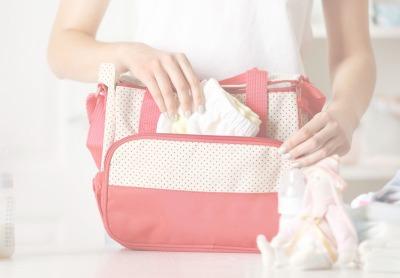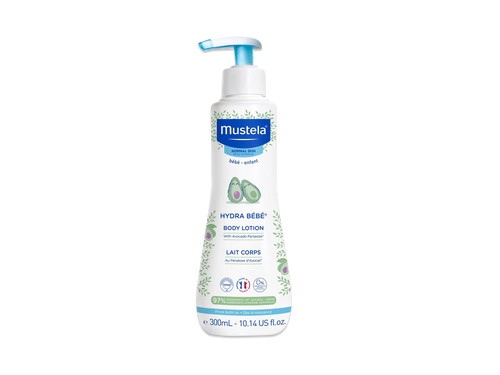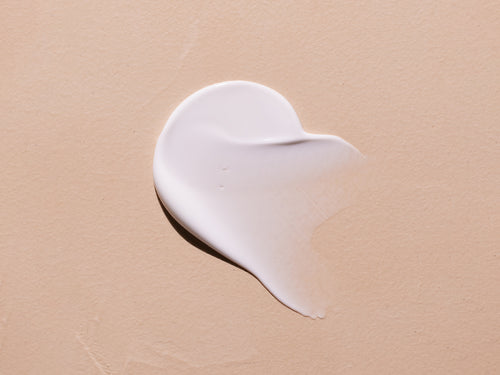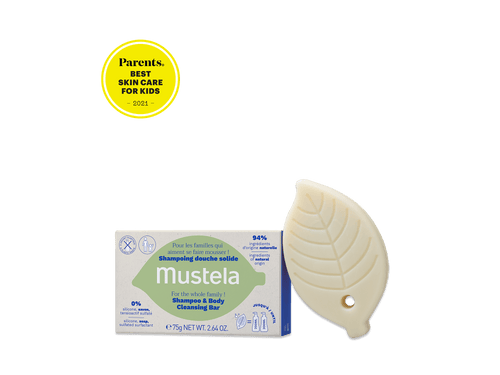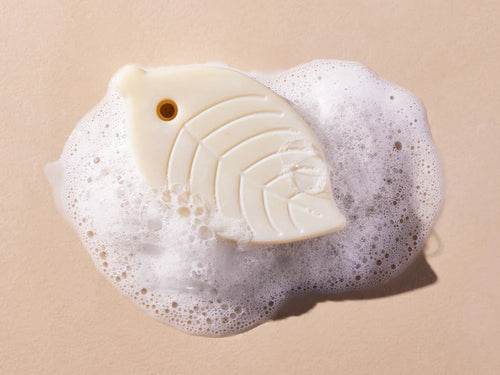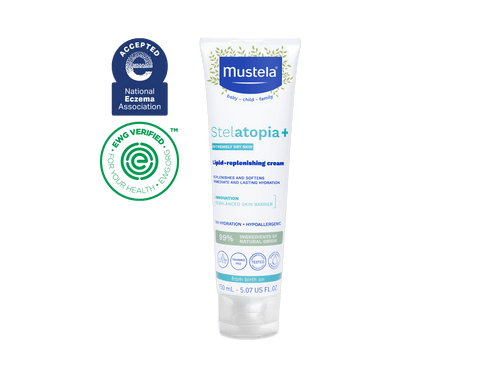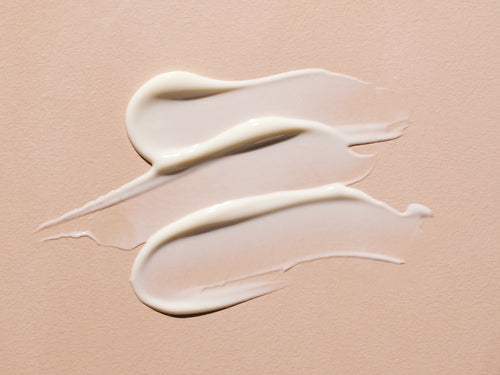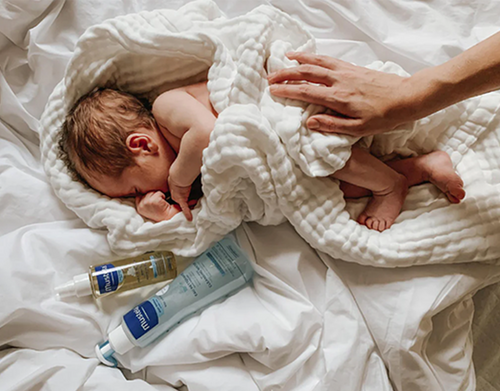Between researching the best baby lotion, stocking up on baby cleansing wipes, learning how to pack your diaper bag, and so much more, there’s a lot that goes into preparing for a new baby. Creating a baby first aid kit is one of the most important things to do before the baby comes.
No matter how much you look out for your baby’s safety and health, for one reason or another, you’ll eventually need to use your baby first aid kit. When that moment comes, you’ll want to have a well-equipped kit on hand and ready to go.
In this guide, we break down exactly what a baby first aid kit is, why you should have one (or multiple) close at hand at all times, and the essentials to stock up on and pack your kit with.
What Is A Baby First Aid Kit And Why Do You Need One?
A baby first aid kit is exactly what it sounds like — it should include everything you’ll need in order to provide immediate care if your baby has a fever, gets a splinter, or needs to take some medicine.
From the time your little one is moving around by themselves, they can get into all kinds of trouble and may need you to come to their rescue — babies can be a little unpredictable at times.
But don’t jump to the worst-case scenario just yet! You don’t have to be in an emergency situation to put a baby first aid kit to good use. It’s also full of things that you might use on a more regular basis, like baby nail clippers or a baby brush.
Having all the tools and products you might need — even the ones you may not have considered! — just in case is the simplest way to put your mind at ease so you and your baby can get back to exploring the world safely.
Where To Buy A Baby First Aid Kit
So how can you get your own baby first aid kit and check it off your to-do list? Should you purchase a ready-made kit or build your own?
If you want to buy a ready-made kit, there are several options on the market that include must-haves like bandages, gauze, and tape. They’re similar to adult first aid kits and tend to include just the basics.
It’s likely that a ready-made kit won’t quite have everything you need to feel totally prepared (such as Mustela’s Cicastela Moisture Recovery Cream and Arnica Gel), so you may want to buy a kit and then add your own personal touches to cover all your bases.
You can also create your own personalized baby first aid kit from scratch. Don’t be overwhelmed — it’s simpler than you think! It’s not hard to gather what you need, and we’ve got a complete list of things to include to make the process even smoother.
Whichever option you choose, check your kit every few months to make sure you’re stocked up on the essentials and to make sure that nothing has expired.
Where To Keep Your Baby First Aid Kit
Keep your baby first aid kit accessible so that it’s easy to find for you as well as other caretakers, like grandparents or the babysitter. You may also want to create more than one kit. That way, you can keep one at home and leave one in the car or in the diaper bag.
The actual container is another important aspect to consider when creating your kit. Make sure it’s a baby-proof bag or box so that your little one can’t get into it. Some contents of the kit (like medicines, tweezers, and rubbing alcohol) can be dangerous to your baby.
You may also want to keep a checklist of each item inside your first aid kit so when it comes time to replace a particular product, you’re one step ahead.
Expert tip: When you create your checklist, write down the expiration dates of each product for anyone who might use your baby first aid kit.
What You Need In Your Baby First Aid Kit

Whether you’re putting together your own first aid kit or simply making sure the one you bought has everything you’ll need, here’s a list of 24 things to include.
Adapt this list according to your and your little one’s particular needs, as well as any recommendations from your pediatrician.
1) Emergency Contact Card
Leaving your baby with people you trust is a big concern for any parent. But it’s equally important that those trusted adults have all the info they need in the case of an emergency.
Write down emergency contact information, such as your phone number, the doctor’s contact information, the phone number for emergency services, and contact information for another trusted friend. Include this card in the first aid kit so it’s easy to find when needed.
You may also want to include information about the closest emergency department in case you ever need to leave your little one with someone who isn’t as familiar with your area. This ensures your baby can receive the care they need as fast as possible.
2) Infant Toothbrush
As we said, you might use some of the items in your baby first aid kit more than you think. Keep an infant (or toddler) toothbrush in your kit for when you need it in a pinch. You never know when it might come in handy!
3) Baby Nail Clippers Or Emery Board
Some people prefer to clip a baby’s nails and other parents choose to only file the nails down, while some choose a combination of the two.
Whatever you decide, include baby nail clippers or an emery board in your first aid kit so your baby is never caught with rough, scratchy nails that can irritate their skin.
4) Baby Brush
Not all babies are the same and that goes for their hair as well. Include in your kit whatever works best for your baby’s hair — whether that’s a baby comb or a brush.
If your baby has cradle cap, you may also want to include other cradle cap products, such as a cradle cap brush, in the baby first aid kit.
5) Child Thermometer
Possibly one of the most important tools in your baby first aid kit will be a child thermometer. You will need to take your child’s temperature if you think they may be sick or if the doctor asks for their temperature before bringing them to the clinic.
There are several different ways to take your baby’s temperature and various types of thermometers on the market: rectal, oral, armpit, forehead, and ear canal thermometers. Keep in mind your child’s age to choose the best thermometer for your kit.
6) Rubbing Alcohol Swabs
Rubbing alcohol swabs have a variety of uses and should be a staple for any first aid kit — baby or otherwise. Keep alcohol swabs in your kit to clean thermometers, tweezers, scissors, and other tools before and after use to reduce the chance of infections.
It’s important to avoid using rubbing alcohol swabs on your little one’s sensitive skin. Instead, try using a gentle wipe like our Certified Organic Water Wipes with Cotton and Aloe for quick clean-ups.

7) Petroleum Jelly
Petroleum jelly is a versatile must-have for your first aid kit. It is beneficial for treating a baby boy’s circumcision area, among other things.
Plus, if you have a rectal thermometer, you can use petroleum jelly to lubricate the thermometer before taking your baby’s temperature.
8) Medicine
It’s a good idea to stock your little one’s first aid kit with medicine, like baby acetaminophen or ibuprofen and baby gas drops. These can help to reduce pain, fever, and other ailments so that your little one can get back to playing as soon as possible.
If your little one is prone to allergies, it may also be worthwhile to have some allergy medicine, such as baby Benadryl, on hand for times when allergic reactions strike.
Talk to your pediatrician about what other medications you should have on hand and how to safely give them to your baby.
9) Oral Syringe
Speaking of medicine, some liquid baby medications are given using an oral syringe. These help to make a potentially stressful situation just a little bit easier and less messy!
Keep a few in your kit so that you can easily give your little one their medicine no matter where you are.
10) Topical Ointments
Two common ointments to keep in a baby first aid kit are hydrocortisone cream and antibiotic ointment. These can be helpful for healing cuts and abrasions, but you should talk to your doctor before using them on your little one.
If you’re interested in a more natural option, look into products like Mustela Stelatopia Emollient Cream, Cicastela Moisture Recovery Cream, and Arnica Gel as natural alternatives to creams for superficial cuts, scrapes, and bug bites.
These creams provide cooling, soothing comfort to baby’s skin while protecting against infections and irritation. They’re perfect for use across all skin types, even the particularly sensitive or very dry.

Thanks to their versatility, these two creams can be used on everything from scrapes and scratches to traces of chickenpox or redness in the diaper area. These fragrance-free ointments repair, soothe, and protect your baby’s delicate skin from birth on!
11) Eyewash
When irritants like sand or dirt get inside your baby’s little eyes, baby eyewash is just what you’ll need to rinse them out. Make sure you know how to correctly use the eyewash you purchase, and be sure to consult your pediatrician for advice as needed.
12) Baby Nose Drops Or Nasal Spray
Stuffy or runny noses are quickly resolved when you keep baby nose drops or nasal spray in your baby first aid kit. The drops can loosen mucus and help clear up congestion.
They can also help keep your little one’s nasal passage moisturized to make breathing more comfortable when they’re experiencing allergies or a cold.
13) Nasal Aspirator Bulb
Speaking of congestion, since your baby can’t blow their own nose, they will often need a little help from you. The nasal aspirator tool lets you suck mucus out of your baby’s nose so they can breathe easy.
14) Tweezers
An absolute must-have for any first aid kit is a good pair of tweezers.
Tweezers can come in handy to quickly and easily remove splinters, stingers, ticks, and any other foreign objects your baby might have gotten into.
15) Bandages
Even babies can get scrapes and cuts, so it pays to have various bandages readily available whenever your little one takes a tumble.
Keep bandaids, gauze, and adhesive tape in your kit for when the unexpected strikes. Make sure you purchase bandaids that are the correct size for the age of your baby. You can also use the gauze for circumcision care.
Remember to apply Arnica Gel or Cicastela Moisture Recovery Cream to soothe boo-boos before putting the bandage on your little one.
16) Sharp Scissors
If you’ve got gauze and adhesive tape in your baby first aid kit, keep sharp scissors on hand as well. You’ll need them to cut bandages down to an appropriate size, and they can also be used to remove existing bandages if needed.
17) Cotton Balls And Swabs
Depending on the size of the area, you can use cotton balls or cotton swabs to apply cream or ointment or wash small cuts. And while you shouldn’t use a cotton swab inside baby’s ears or nose, you can use them to carefully clean the outsides of these areas.
18) Instant Cold Pack
Instant cold packs are beneficial to have on hand for several reasons. If your little one takes a fall, has a temperature, or is feeling overheated, a cool compress can help to bring swelling and fevers down.
These packs don’t require any refrigeration, making them the perfect emergency pain relief option for times when you’re on the go!
19) CPR Reference Card
In the heat of the moment, it can be easy to forget important, potentially life-saving information, such as infant CPR. While we hope you’ll never need to use it, a CPR reference card can act as a refresher for the steps you need to take to provide resuscitation.
20) Plastic Bags
While you may have a couple of plastic bags in your diaper bag, it’s a good idea to keep a few in your first aid kit, too. They come in handy for throwing out waste, and it’s nice to know you’ll never run out when you have them available in multiple locations.
21) Disposable Gloves
If you’re ever faced with a situation in which you need to clean up an extensive mess or provide first aid assistance to someone else’s little one, you’ll be thankful to have some disposable gloves on hand — trust us!
This supply is inexpensive and easy to find, so there’s no reason not to have a pack in your baby first aid kit, just in case you ever need to use them.
22) A Copy Of Your Baby’s Medical History
This may not be necessary for everyone, but for parents of little ones that are prone to allergies or have had any medical complications, having a written copy of your baby’s medical information may be of use.
Note any known allergies to foods, medicines, or environmental factors such as particular bugs or plants, along with any conditions your little one may have been diagnosed with.
This will help you keep a clear head in stressful situations and can provide critical information to medical personnel, such as EMTs.
23) Hand Sanitizer
Global pandemic or not, having hand sanitizer at the ready is a smart idea!
Not only will it help prevent the spread of germs from colds and flu, but it’s also helpful for managing your own hygiene before treating your little one’s cuts and abrasions (we don’t want any infections here!).
Unfortunately, sanitizing your hands can also dry them out. Be sure to keep your hands hydrated and healthy by applying our Certified Organic Hydrating Cream with Olive Oil and Aloe after using hand sanitizer.

24) An Up-To-Date First Aid Manual
Last but certainly not least, your baby first aid kit should include an up-to-date first aid manual to help you navigate any situations that require first aid.
These manuals usually come with any ready-made kits, but they can also be purchased separately. They cover everything from the best way to handle minor cuts and abrasions to how to apply bandages to more extensive wounds.
What To Do In Case Of An Emergency
As much as we want to avoid thinking about it, there may be times when you need help beyond what your first aid kit can offer. This is when it’s time to call for backup in the form of medical assistance.
You know your little one better than anybody, so it’s important to follow your instincts and try to remain as calm as possible in the face of a medical emergency.
Symptoms that may require further medical assistance include noticing your little one seems less alert than normal, swelling of body parts, increasing pain, difficulty breathing, bleeding that doesn’t stop after five minutes, a blue tinge to the skin, and any large or deep burns or cuts.
If you notice these symptoms or any other troubling signs in your baby, remain calm and prepare to complete the following steps:
- Grab your list of emergency numbers so you can call your baby’s doctor. If the doctor is unavailable, call the number of your local urgent care or emergency department
- Have your baby’s medical information close by, including allergies or medical conditions they may have
- Keep your little one as calm and still as possible and be sure to follow any additional instructions given to you by medical professionals, including any CPR procedures
It can be helpful to have a list to follow during times of emergency. It’s easy to feel overwhelmed and forget important information, so having a checklist written down and medical information close at hand can make these stressful situations a bit easier.
Stock Your Baby First Aid Kit With Essentials From Mustela

There are a lot of daunting things to learn when you first become a parent, but how to stock your baby first aid kit doesn’t need to be one of them. By following our guide, you can rest easy knowing that you’ll be fully prepared for whatever comes your way.
Remember to check your baby first aid kit every few months to ensure no products have expired and that you have everything available should you need to use it.
Remember to include all the essentials, from rubbing alcohol swabs for cleaning your tools of the trade to topical ointments — like our Stelatopia Emollient Cream, Cicastela Moisture Recovery Cream, or Arnica Gel — to soothe your little one’s skin.
When you know your baby first aid kit is good to go, you can face any adventure you and your little one tackle!


